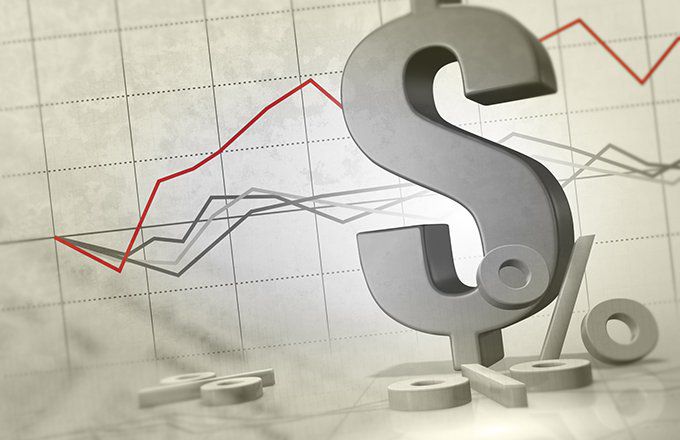:max_bytes(150000):strip_icc():format(jpeg)/thinkstockphotos_80410231-5bfc2b97c9e77c0026b4fb20.jpg)
The price of oil is one of the most closely watched economic trends in the world. It affects the economies of every nation, and petrostates such as Venezuela are highly dependent on oil exports. Countries such as Venezuela, which depend highly on one resource for economic growth, rarely experience economic growth because they ignore other much-needed sectors and resources.
Key Takeaways
- Venezuela relies heavily on its oil exports and experiences economic swings that coincide with oil prices.
- Venezuela’s government faces sanctions from many countries that impact its ability to export oil.
- The country’s oil-producing and energy infrastructure is failing, making it dependent on allies for repairs and products needed for production.
The Effect of Oil Prices on Venezuela
Countries that rely on oil exports to drive their economies (while not ranking among the world’s largest oil consumers) experience a different relationship between oil prices and economic health. While oil prices maintain a complex relationship with the U.S. economy, the price of oil and Venezuela’s economy move pretty much in lockstep.
When oil prices are high, Venezuela enjoys economic growth. When oil prices drop, the country experiences magnified economic downturns because it relies too heavily on oil exports.
Oil Is Major Part of Venezuela’s GDP
Oil comprises more than 80% of Venezuela’s exports and more than 17% of its gross domestic product (GDP), so high prices provide a boon to the country’s economy. The period from 2006 until the first half of 2014, save for a brief dip in late 2008 on the heels of a global recession, saw oil prices mostly hover between $100 and $125 per barrel. During that time, Venezuela used its revenues from high oil prices to fund its budget and wield political power. By providing subsidized oil to as many as 13 neighboring Latin American countries, most notably Cuba, Venezuela extracted political favors and attempted to build a coalition against rival nations, namely the U.S.
Its oil giveaway program became more of a burden than a boon for the Venezuelan economy as oil prices collapsed toward the end of 2014. Venezuela was giving away over 200,000 barrels of oil per day (half of which went to Cuba), reducing the amount it had available to export for profit. When oil prices were over $100, Venezuela received enough margin from exporting oil that the lower volume didn’t harm its economy. When oil dropped significantly below that price level, the country’s margins were squeezed to the point where it did not meet its spending, resulting in ballooning debt.
In early 2015, Venezuelan president Nicolas Maduro, facing record low approval ratings brought on by the country’s crumbling economy, embarked on a world tour to implore other nations with heavy influence on the oil market to push the price back to $100 or more. Maduro’s desperate actions at the time serve as a testament to oil’s grip on the Venezuelan economy.
Venezuela’s Oil Situation as of 2025
By 2018, Venezuela was experiencing an economic crisis and shortages of food, medication, and basic necessities. The crisis continued, and by May 2024, more than 7.7 million people had fled the country. This mass migration diminished the workforce, including those in the oil industry.
As a result of this lack of labor, economic sanctions, and other issues, Venezuela’s oil production fell to its lowest point in more than 70 years. In 2023, production fell to 742,000 barrels per day, a 70% drop from its 2013 production level. However, the U.S. Office of Foreign Asset Control (OFAC) lifted sanctions on Venezuela’s energy sector in 2023, and OFAC granted Chevron waivers to resume exporting crude from Venezuela beginning in January 2023.
Venezuelan oil production increased to 772,000 barrels per day in 2024.
Because the country’s economy is closely tied to its oil production, it will need to find a way to attract workers and foreign oil companies like Chevron to increase production while dealing with sanctions. Additionally, the country’s refineries suffer from years of neglect, and much of its infrastructure is more than 50 years old. Since 2022, state-owned oil company PDVSA has been collaborating with Iran on repairing refineries and its oil infrastructure. However, an explosion in November 2024 caused “catastrophic” damages to the Muscar gas complex, requiring even more downtime and repair work. The production of diluents used by PDVSA was affected, which reduced its ability to dilute heavy crude and transport it.
But refinery repairs won’t be enough to get Venezuela back up and operating at full capacity. The U.S. Energy Information Administration expects the country to increase production but at a very limited capacity due to power grid failures and a lack of diluent. A diluent is a light hydrocarbon used to thin heavy crude oil for transportation in pipelines.
How Is the Economy In Venezuela?
As of February 2025, Venezuela’s economy is in a bad state. It depends highly on oil—and sanctions, old infrastructure, corruption, and poor economic decision-making in the past, which have caused the country to collapse.
What Caused Venezuela’s Economy to Collapse?
Venezuela’s collapse is a product of many issues stemming from poor government and economic management, political corruption, sanctions, hyperinflation, and over-reliance on one resource.
What Caused the Hyperinflation in Venezuela?
Hyperinflation in Venezuela was the result of many years of poor decision-making, such as printing money to finance the government and implementing price controls in attempts to reign in its downward spiraling economy.
The Bottom Line
Venezuela has the world’s largest proven reserves of oil, but its political and economic environment and collapsing infrastructure, as of February 2025, prevents it from reaching the production capacity it needs to reinvigorate its economy. It’s uncertain what the country will need to do to recover, but what is clear is that there is lots of work to do to put the country on the path to recovery.



